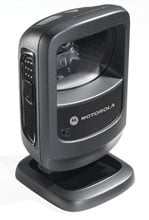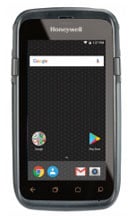Barcode scanners have become easier to use than ever before. Long gone are the days of dealing with decoder boxes and multiple cables going everywhere. Simply plug the cable into the scanner and PC and you’re up and running!
While their operation has become easier, there are now more options and varieties of scanners to choose from. Picking the right one can be a challenge without understanding the various types and options.
The first step in finding the right scanner is identifying your specific needs:
• Where will the scanner be used? Is it a rugged environment?
• How often will it be used?
• What kind of barcodes will you be reading?
• How will the scanner be used?
• Can you stay connected to a PC?
Knowing how you’ll be using the scanner will help you decide what scanner type, form factor, and other options you’ll need. Understanding each of these factors will help you find the right scanner for your needs.
Barcode Scanner Types
One of the most important concerns when choosing a suitable scanner is the type of scan engine it has. This is ultimately dependent on the type of barcodes that you will be reading and how aggressive of a unit you’ll need. There are 3 main types of scan engines:
Laser
This is the most well-known scanner type. It uses a red diode laser to read the reflectance of the black and white spaces in a barcode. Laser scanners are only able to read standard linear (1D) barcodes but are also the most cost-effective option. Standard laser scanners can read from a few inches to a foot or two away depending on the size of the barcode. There are also extended range laser scanners, like the Zebra LS2208, which can read up to 35ft away when using large reflective labels.
Linear Imager
Linear imager scanners are similar to lasers in that they also only read 1D barcodes. But instead of reading reflected light from the laser, they take a picture of the barcode. It then analyzes this image to extract the information from the code. Linear imagers, like the AirTrack S1, have become a very good replacement for laser scanner as their read ranges and costs have become similar. A linear imager also does a better job reading poorly printed or damaged codes compared to lasers. For applications that need a more aggressive scanner, a linear imager will be a great fit for the same cost.
2D Area Imagers
Like linear imagers, full 2D imagers also capture an image to analyze. But compared to the linear only devices, these scanners can read any type of barcode. 1D, stacked, and 2D barcodes are all supported by a 2D imager. Another advantage these imagers have is that the orientation of the barcode isn’t important when reading. With lasers and linear imagers, you have to line up the indicator horizontally across the barcode. A 2D imager is taking a more detailed image and is more intelligent, so you can read a code in any direction. This results in faster reads with less aiming. 2D imagers, like the AirTrack S2, can also read barcodes off of any surface including a monitor or phone screen. With their added abilities and very aggressive reading, 2D imagers are becoming more popular in all industries to speed up scanning applications and expand the ways in which barcodes are used.
Form Factors
Once you know what type of scanner you’ll need, the next big question is what form factor the scanner will be. Most of us are familiar with the basic gun-style and in-counter scanners from retail and grocery stores. There are 5 main form factors for scanners, and each has advantages depending on your application and how you’ll use the scanner.
Handheld
 These are by far the most common form that scanners come in and are very easy to operate. Simply aim the scanner at the barcode and pull the trigger. Most models, like the Motorola LS2208, will also offer a stand for hands-free operation. Handheld scanners are also available in a cordless form to avoid cable clutter and increase your mobility.
These are by far the most common form that scanners come in and are very easy to operate. Simply aim the scanner at the barcode and pull the trigger. Most models, like the Motorola LS2208, will also offer a stand for hands-free operation. Handheld scanners are also available in a cordless form to avoid cable clutter and increase your mobility.
Presentation
 Presentation scanners, like the Zebra DS9208, are designed to sit on a counter-top and don’t need to be picked up or held. These scanners are made for hands-free scanning and will not require triggering to read. Likewise, instead of a single aimer like handheld scanners, presentation scanners have wide reading areas to reduce the need for aiming. You’ll find these types of scanners at retail check-outs since it is easy to scan many items quickly. Just present the barcode in front of the scanner and it will read it automatically.
Presentation scanners, like the Zebra DS9208, are designed to sit on a counter-top and don’t need to be picked up or held. These scanners are made for hands-free scanning and will not require triggering to read. Likewise, instead of a single aimer like handheld scanners, presentation scanners have wide reading areas to reduce the need for aiming. You’ll find these types of scanners at retail check-outs since it is easy to scan many items quickly. Just present the barcode in front of the scanner and it will read it automatically.
Mobile Computer
 While they also do more than what basic scanners do, mobile computers provide complete freedom since both the PC and scanner are in a single device. Where other scanners need to be connected to a PC, mobile computers like the Honeywell CT60 can move around freely while storing information into their internal memory or communicate via Wi-Fi and Cellular (WAN) networks. Mobile computers are ideal for applications that require true mobility like inventory management and asset tracking.
While they also do more than what basic scanners do, mobile computers provide complete freedom since both the PC and scanner are in a single device. Where other scanners need to be connected to a PC, mobile computers like the Honeywell CT60 can move around freely while storing information into their internal memory or communicate via Wi-Fi and Cellular (WAN) networks. Mobile computers are ideal for applications that require true mobility like inventory management and asset tracking.
In-counter
 In-counter scanners are similar to presentation scanners in that you just present the barcode in front of the reader – however, these are made to be embedded into a counter-top. You have probably come across these types of scanners at grocery stores and self check-out lines. Units like the Datalogic Magellan 8300, are easy to operate for any user. Many models also have integrated scales to completely serve a POS lane.
In-counter scanners are similar to presentation scanners in that you just present the barcode in front of the reader – however, these are made to be embedded into a counter-top. You have probably come across these types of scanners at grocery stores and self check-out lines. Units like the Datalogic Magellan 8300, are easy to operate for any user. Many models also have integrated scales to completely serve a POS lane.
Fixed Mount
 A fixed scanner is a bit more specialized compared to the other types since it is really meant to be integrated with a larger automated system. These scanners are made to be mounted on a conveyor line or in a kiosk and do not have a typical trigger or button to scan. Often, these scanners will always be on or get triggered by external sensors or controllers. Fixed scanners come in a wide range of speeds, like the Microscan MS-9, to accommodate even very high-speed assembly lines without any user intervention.
A fixed scanner is a bit more specialized compared to the other types since it is really meant to be integrated with a larger automated system. These scanners are made to be mounted on a conveyor line or in a kiosk and do not have a typical trigger or button to scan. Often, these scanners will always be on or get triggered by external sensors or controllers. Fixed scanners come in a wide range of speeds, like the Microscan MS-9, to accommodate even very high-speed assembly lines without any user intervention.
Form Factors by Industry
| Industry | Corded Handheld | Cordless Handheld | Presentation | Mobile Computer | In-counter | Fixed Mount |
|---|---|---|---|---|---|---|
| Retail | • | • | • | • | ||
| Grocery | • | • | • | • | ||
| Warehousing | • | • | • | • | ||
| Healthcare | • | • | • | |||
| Manufacturing | • | • | • | • | ||
| Education | • | • | • | |||
| Logistics | • | • | • | • | ||
| Field Services | • | • |
Connectivity – Corded vs. Cordless
Every scanner has to communicate with a PC to transmit the barcode information into the software that you are using. Historically, there were only corded scanners that connected directly to the PC through a cable. These are still the most common scanner type and normally interface with a PC through a USB connection. Serial (RS232), PS/2, and proprietary terminal connections are also available for many models. Corded scanners are easy to get up and running and will be your least expensive option.
Cordless scanners have become more common today as their costs have become much more affordable. These handheld scanners function the same way a corded scanner works except that the scanner communicates to a base station wirelessly. This base station is then connected to your PC through a cable. Your PC does not need to have any wireless support since the cradle and scanner handle all of this. Just plug in the cradle, pair the scanner to the base, and you are ready to start scanning. It is very easy to replace a corded scanner with a cordless one since it has no effect on your PC or software.
Most cordless scanners use Bluetooth to communicate, which normally gives you a range of 33ft. There are some specialized Bluetooth and proprietary wireless units that can transmit beyond 200ft. Some models also offer additional features that corded scanners don’t, such as batch memory modes and direct pairing. The Zebra CS3000, for example, can pair directly to a device without using its cradle. This makes it a perfect match to use with a laptop, tablet, or smartphone that has built-in Bluetooth capabilities. Cordless scanners can provide greater mobility and freedom from cable clutter in any application.
Ruggedness
Regardless of the environment that you’ll be using your scanner in, ruggedness is always something to consider. The environment is a big factor, though you should also consider how the scanner will be used. You may be in a standard environment but if the scanners are mistreated, a more rugged option will help save time and money down the road.
Most scanners are designed for daily use in an office or retail environment. An accidental drop once in a while will be ok. But if you are using your scanners in a warehouse or outdoor environment, you will want to consider a ruggedized unit like the Honeywell Granit 1911i. The differences between a ruggedized and standard model are quite drastic. Rugged units are completely sealed against dust and can handle repeated 6ft drops on concrete. With a rubberized case, they can handle severe mistreatment. Some of them can even be used as a hammer without any problems!
You can always tell a ruggedized scanner by their bright yellow or red cases. They may be more expensive, but the time lost when a scanner breaks and the cost of replacing it quickly balances out the initial extra cost.
Finding the Right Scanner
With all the options available for barcode scanners today, it’s important to find the right device for your business needs. Determining how you will use the scanner and what features you need will make the decision process easier. If you are still having difficulty or have additional questions, give our scanner experts a call. We’re happy to help you out.
